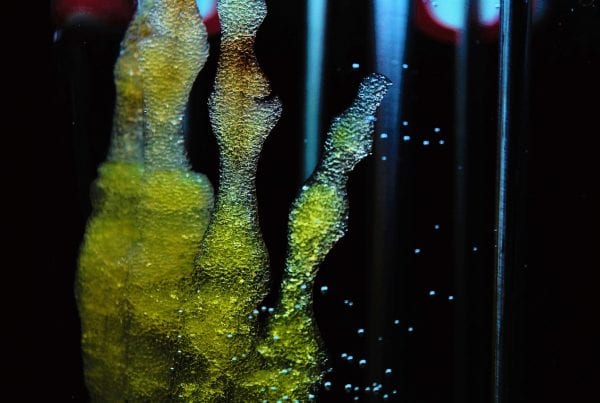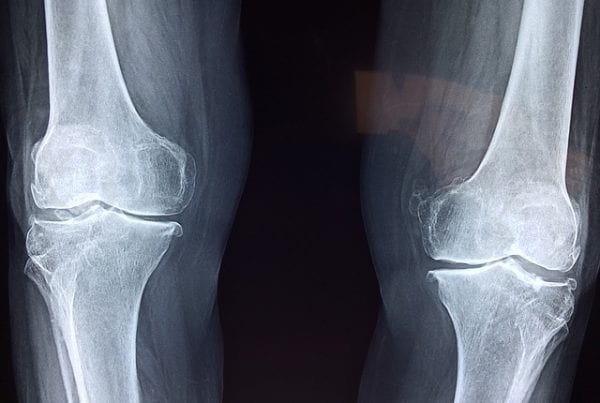Urologic diseases are a variety of conditions that affect different parts of the body. They are often very severe conditions that significantly impact a person’s quality of life, finances, and relationships. Some of the common urologic conditions are prostate cancer, urinary incontinence, bladder prolapse, benign prostatic hyperplasia, kidney cancer, and erectile dysfunction. A significant number of Americans suffer from one or more of these conditions.
For instance, it was reported that approximately 50% of men in their 50s and 60% of men in their 60s have a mild erectile condition. The frequency and cost of treating these conditions put an immense burden on both the affected individuals and professionals in urology medicine. For this reason, clinicians look for a better option that will provide more optimal results than the current treatment options.
Among the several newly adopted therapies in urology medicine, platelet-rich fibrin has been regarded as the best treatment procedure for sexual disorders and other urologic conditions. Just like the popular platelet-rich plasma (PRP), PRF is a very effective tool for P-shot therapy to treat erectile dysfunction in men. Apart from this, there are several other applicable methods depending on the condition.
What is P-Shot?
The Priapus Shot, or P-Shot, is a revolutionary new treatment procedure specifically for erectile dysfunction in men. It uses natural regenerative cells drawn from your blood to cause a renewal of affected cells in your body and to stimulate a natural healing process.
It is a treatment procedure in which the concentration of your own platelets is injected into your body. Because the product is extracted from your own bloodstream, this makes P-shot free of heart-health risks that are commonly experienced in other urologic condition treatment options. Over the years, medical practitioners have been using the procedure to treat different sexual disorders, and the feedback has been very encouraging.
The procedure has been investigated for its efficacy, tolerability and safety in different human and animal clinical studies and has been generally affirmed to be a very effective and promising tool for urologic conditions.
Is Platelet-Rich Fibrin the Same Thing as Platelet-Rich Plasma?
No, platelet-rich fibrin (PRF) is not the same thing as platelet-rich plasma (PRP). Although there are some basic similarities between the two products, they have key differences that distinguish them. While PRP has been around for quite a long time in urology medicine, PRF is a relatively new product that is regarded as a superior and more effective treatment option.
The two products are extracted from the same source: a patient’s own whole blood. However, the preparation and the level of concentration are the main factors that differentiate the two. For traditional platelet-rich plasma, after drawing out blood from a patient, the blood is then spun in a centrifuge machine at a very high speed to separate the heavier cells in the blood, such as stem cells and white blood cells, and then collect the needed platelet or plasma, which will be injected back into the patient.
However, newer findings have revealed that some white blood cell and stem cell concentrations have more healing factors than PRP, and this discovery inspired the platelet-rich fibrin. Unlike PRP, PRF is spun at a slower speed, thereby allowing some stem cells and white blood cells to remain within the platelet layer that will be collected and injected back into the patient’s body. This guarantees more healing factors than are present in PRP.
Additionally, while PRP has 2-5 times the concentration level than the platelets found in the body, studies have revealed that PRF has up to ten times the platelet found in the body. Also, while PRP requires an anticoagulant in the test tubes to keep it from clotting during preparation, for PRF, no anticoagulant is required. This absence of an anticoagulant in PRF allows the stimulation of more natural healing in the body. All these factors make platelet-rich fibrin a more preferred treatment procedure for urologic conditions.
How is the Platelet-Rich Fibrin Matrix Injection Administered?
Now that you know the source and the process of acquiring platelet-rich fibrin, let us look at how it is administered for different urologic conditions. Unlike many other treatment options for urologic conditions, platelet-rich fibrin matrix injection is a hassle-free, non-invasive procedure.
It is administered by a trained clinician following standard protocols for the therapy. After drawing the blood sample from your body, the physician will prepare it using a centrifuge machine to isolate the needed platelet-rich fibrin, which will then be injected back into your body.
Before administering the PRF, the physician must have completed a thorough evaluation of your condition to determine the most appropriate treatment plan for you. This may include a medical history, physical examination, and certain laboratory tests. Once this is completed, then you will be scheduled for the therapy.
Urologic Conditions Treated With Platelet-Rich Fibrin Matrix Injections
Since the discovery of platelet-rich fibrin, doctors have been using it for different urologic conditions, such as:
Erectile Dysfunction
This is one of the most common conditions that have benefitted from the emergence of platelet-rich fibrin. The most popular procedure for this is known as P-Shot or Priapus Shot. Erectile dysfunction or impotence is the inability to achieve and maintain an erection enough for sexual intercourse. It is a serious problem that affects millions of men in the U.S.
Naturally, the erection process consists of different elements including the brain, arteries, tissues, veins, and functional anatomy of the penis, such as the tunica albuginea and the corporal. Erectile dysfunction is caused by different physical and psychological factors such as stress, anxiety, depression, alcohol use, kidney diseases, prostate cancer, diabetes, heart and vascular disease, and blood vessel problems. The longer these factors are an issue, the more they impair the cells responsible for the erection process and lead to either a poor or nonexistent sex life.
The prepared platelet-rich fibrin from your own blood will be injected into your penis. The aim is to cause a regeneration of the affected cells and reinvigorate them. From the first treatment session, you will begin to notice changes in your body, especially in the penile area. The result includes an increase in the growth of new blood vessels and improved blood circulation into your penile area.
This will lead to better sexual arousal and longer intercourse. The P-shot results may vary depending on the individual’s medical history and other factors. However, most men who have undergone the procedure usually experience the following benefits during and after the treatment:
- Longer and more pleasurable sexual intercourse
- Improved prostate condition
- Increased erection firmness
- More frequent sexual encounters
- Increased sexual stamina
- Improved blood flow and blood circulation into and within the penile area
- Decreased urinary incontinence
Not only does the P-Shot have a quick turnaround effect for erectile dysfunction, but it also has a long-term efficacy, which can last for several months to a year in the body. Moreover, most men who used to depend on over-the-counter drugs and other methods were able to achieve an erection naturally after undergoing P-Shot therapy.
Platelet-Rich Fibrin for Surgical Intervention for Skin Wound Healing
After each surgical intervention, the wound healing process has always been a major concern for the surgeons. It even poses a bigger challenge when it comes to facial surgery. While there are several existing measures for wound closure, there is a need to have newer modalities that will guarantee more optimal results.
This was the case of a 30-year-old motorcycle accident victim whose experience with platelet-rich fibrin was reported in a recent study. The accident left him with an avulsive wound of around 0.5 x 1 cm in size in the lower lip region due to the torn and missing skin. This made the wound a complicated one, as the depth was uneven based on the tissue loss in some areas.
Using primary closure could have led to pouting of the lips, while secondary intention could also have resulted in fibrosis and hideous scarring. The surgeons, therefore, decided to apply the platelet-rich fibrin membrane.
A double layer of the PRF membrane was placed over the affected area to achieve an even surface. This led to a gradual decrease in the size of the wound and tissue formation. Due to its blood-clotting power, PRF expedited the healing process with early wound contracture.
In the subsequent follow-up visits, it was observed that the color of the reconstructed region had become comparable with the uninjured adjacent tissue and the vermilion border and the white roll was inconspicuous. The patient didn’t just experience quick healing, but his injured face also healed with no scar.
Musculoskeletal Disorders
Musculoskeletal injuries are injuries that affect the nerves, joints, ligaments, muscles, tendons, and bones. Though these injuries can occur anywhere and at any time, they are more common in the workplace. Bureau of Labor Statistics (BLS) revealed that musculoskeletal injuries account for over 30% of all instances in which employees stay away from work for days as well as being a prominent issue among athletes.
Despite the high rate of musculoskeletal injuries, most of the available methods of management, such as ice, rest, compression, and elevation have not offered the best solution. This is what makes platelet-rich fibrin matrix a desirable option for treating the following musculoskeletal injuries:
Tendon Healing
Tendon injuries are very common in orthopedic medicine, with an annual estimate of one per 10,000 people within the athletic community and the whole population. Physicians have been injecting platelet-rich plasma to treat several tendon problems, such as Achilles tendonitis, tennis elbow, and pain in the patellar tendon in the knee. However, it has been reported in several clinical studies that the platelet-rich fibrin has more healing factors than PRP in treating tendon injuries.
The tendon healing process involves the activity of leukocytes and platelets. This makes the growth factors present in the platelet-rich fibrin more efficient tools for tendon injuries than many other options. Though most of the available research that evaluates the efficacy and safety of the PRF for tendon are animal studies, one general conclusion is that it promotes the accelerated healing of the tendon than PRP.
Why is Platelet Rich Fibrin Matrix So Effective?
Platelet-rich fibrin is considered the best among platelet-derived products, essentially because it consists of the platelets, cytokines, and fibrin, which are the three crucial components for the healing process. The complementary roles and functions of these three elements in a platelet-rich fibrin matrix are what distinguishes it from the first generation of platelet products.
Fibrin is an insoluble protein and it plays an important role in blood clotting, cellular and matrix interaction, inflammation, neoplasia, and wound healing. When PRF is injected into the body, the fibrin significantly improves the healing process by aiding the angiogenesis.
How Fibrin Supports Angiogenesis
Angiogenesis is the process of creating new blood vessels. It involves the growth, migration, and differentiation of endothelial cells. Endothelial cells are found in the interior surface of the lining of blood vessels. Angiogenesis is controlled by chemical signals in the body and the presence of cytokines—which are receptors in angiogenesis—in fibrin matrix helps in sustaining the release of signals needed to initiate the growth of new blood vessels in patients.
It allows the binding of endothelial cells to form into fibrin itself, fibronectin, and vitronectin. Apart from this, fibrin has also been found to provide structural support to mesenchymal stem cells, assist immune response, and also have effects on osseous tissue. All of these are important factors that must occur during the healing process.
How Modern Therapy MD Can Help Treat Erectile Dysfunction and Other Urologic Conditions
Erectile dysfunction and other urologic conditions can be very worrisome. However, getting the right and timely medical attention can make a whole lot of difference in your sex life, fitness, and general wellbeing. This is where Modern Therapy MD comes in.
At Modern Therapy MD, we have a team of dedicated and highly experienced medical experts that is committed to helping adult men and women improve their quality of life. We use the latest technologies in modern medicine to deliver the best services to our patients. For your P-Shot therapy and other urologic treatments, you can schedule an appointment with us today by filling out this contact form.
Sources
https://www.hindawi.com/journals/isrn/2013/627367/
https://www.nih.gov/news-events/news-releases/urologic-diseases-cost-americans-11-billion-year
https://www.urologyhealth.org/urologic-conditions
https://www.bls.gov/iif/osch0062.pdf
https://shared.uoit.ca/shared/department/healthandsafety/documents/MSD%20fact%20sheet%20UOIT.pdf
https://www.ncbi.nlm.nih.gov/pmc/articles/PMC6572609/
https://www.ncbi.nlm.nih.gov/pmc/articles/PMC3938769/
https://www.hindawi.com/journals/isrn/2013/627367/
https://www.sciencedirect.com/science/article/pii/S0363502317311103
https://www.ncbi.nlm.nih.gov/pmc/articles/PMC3663175/
https://www.ncbi.nlm.nih.gov/pmc/articles/PMC5754585/



